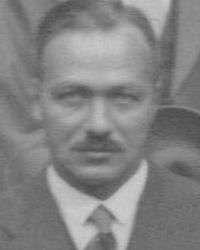Rudolph Minkowski
| Rudolph Minkowski | |
|---|---|
 | |
| Born |
May 28, 1895 Strasbourg, German Empire |
| Died |
January 4, 1976 (aged 80) Berkeley, California |
| Nationality | Germany |
| Fields | astronomy |
| Institutions | Palomar Observatory |
| Known for | supernovae |
| Notable awards | Bruce Medal in 1961 |
| 1620 Geographos | September 14, 1951 |
Rudolph Minkowski (born Rudolf Leo Bernhard Minkowski; May 28, 1895 – January 4, 1976) was a German-American astronomer.[2]
Minkowski was the son of Marie Johanna Siegel and physiologist Oskar Minkowski.[3][4] His uncle was Hermann Minkowski, a mathematician and one of Einstein's teachers in Zürich. Rudolph studied supernovae and, together with Walter Baade, divided them into two classes (Type I and Type II) based on their spectral characteristics. He and Baade also found optical counterparts to various radio sources.
He headed the National Geographic Society – Palomar Observatory Sky Survey, a photographic atlas of the entire northern sky (and down to declination -22°) up to an apparent magnitude of 22.[2]
Together with Albert George Wilson, he co-discovered the near-Earth Apollo asteroid 1620 Geographos in 1951.[5] He also discovered Planetary Nebula M2-9. He won the Bruce Medal in 1961.[2] The lunar crater Minkowski is named after him and his uncle.
Bibliography
- Minkowski, R (1960), "International Cooperative Efforts Directed Toward Optical Identification of Radio Sources", Proc. Natl. Acad. Sci. U.S.A. (published Jan 1960), 46 (1), pp. 13–9, Bibcode:1960PNAS...46...13M, doi:10.1073/pnas.46.1.13, PMC 284999
 , PMID 16590587
, PMID 16590587
References
- ↑ "Minor Planet Discoverers (by number)". Minor Planet Center. 23 May 2016. Retrieved 22 June 2016.
- 1 2 3 Kuhi, Leonard V. (March 1976). "Rudoph L. Minkowski". Physics Today. 29 (3): 78–80. doi:10.1063/1.3023389.
- ↑ Notable Scientists from 1900 to the Present: I–M
- ↑ The Concise Dictionary of American Jewish Biography
- ↑ Schmadel, Lutz D. (2007). Dictionary of Minor Planet Names – (1620) Geographos. Springer Berlin Heidelberg. p. 128. ISBN 978-3-540-00238-3. Retrieved 22 June 2016.